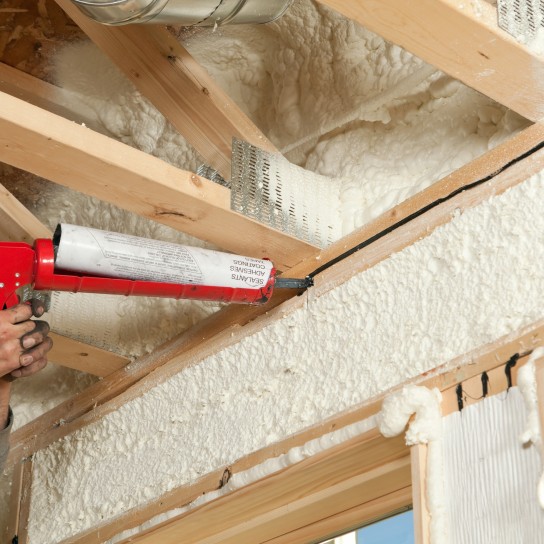Want more information on our Coatings & Construction products?
We committed to providing our customers with high-quality chemicals. To learn more about our distribution services and products we offer follow the links below.
Sealants are applied to block any passage fluids might otherwise have through surfaces, openings or joints in materials. They can have a variety of attributes that apply with a higher success rate to different types of projects. For instance, they can be rigid or flexible, strong or weak, and temporary or permanent.
Even though some sealants have qualities similar to those of adhesives and usually go by the name “structural sealants” or “adhesive sealants,” they are not adhesives and shouldn’t be mistaken as them.
One type of sealant is a viscous substance with little to no flow characteristics and stays wherever it’s applied. Another type is runny and thin, which allows the sealant to penetrate substrates through capillary movement. Anaerobic acrylic sealants, which are often called impregnants, can cure even without air. Surface sealants, on the other hand, require air.
Sealants are often made from organic elastomers, but they perform distinct functions based on their formulation. They generally fall between extremely low-strength versions like waxes, putties and caulks and adhesive-derived, higher-strength types and coatings.
| The different types of sealants are almost countless, but some of the most common include: | |||
|---|---|---|---|
| Acrylic Resins | Adhesive | Butyl Rubber | Foam |
| Floor | Hot Wax | Latex | Metal |
| Paint | Plastic | Polysulfide | Polyurethane |
| Silicone | Urethane | Valve Seal | Varnish |

Because sealants function as a type of mechanical seal and can come with numerous properties, they tend to have many applications, including:
Before deciding on your sealant, consider the following industries and how they make use of sealants in their various applications.

In the construction industry, sealants are otherwise referred to as caulking in many instances. They serve the purpose of blocking liquid, dust and the transmission of heat and sound. The sealants are applied to seal expansion joints, cracks, concrete road joints and concrete gaps.
The types of sealants used in civil engineering and infrastructure are like those in the construction industry. Because sealants offer a structure protection against the elements and prevent penetration from gas, noise, air, fire, smoke and liquid from one spot to another, they can close tiny holes in drywall, concrete and more, making infrastructure more stable and desirable.
Because certain sealants like silicone are resistant to extreme weather, high and low temperatures and UV, they are ideal for glass insulation and glazing. They help keep heat and air inside or outside, and they’re waterproof and capable of an adhesive nature, which allows for superior glazing.
To keep facilities and plants running properly, OEM maintenance should be strictly followed, which includes the infrastructure of the entire building. Sealants help to keep products inside a building safe, reducing damage from outside elements, air, temperatures and more.